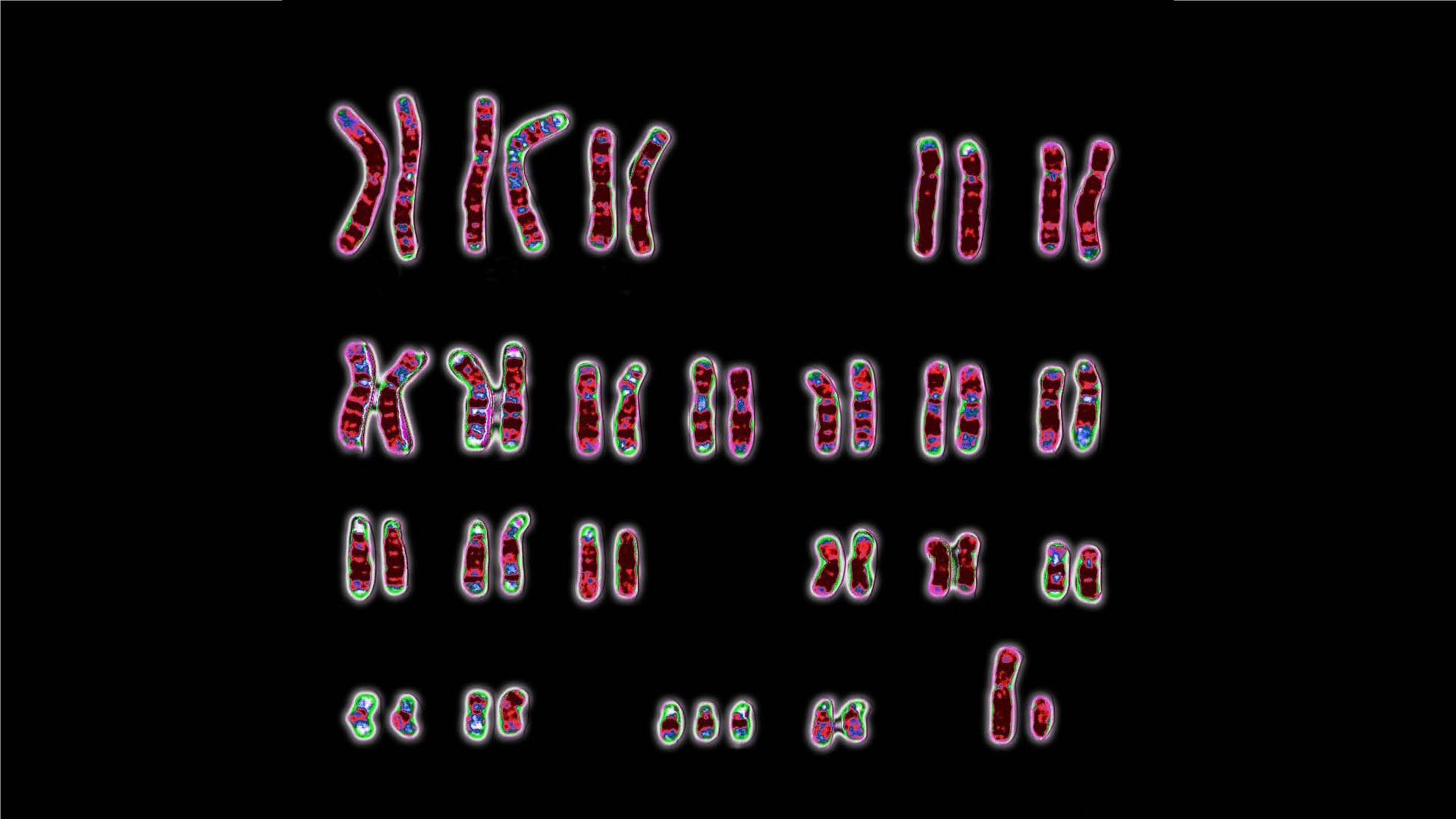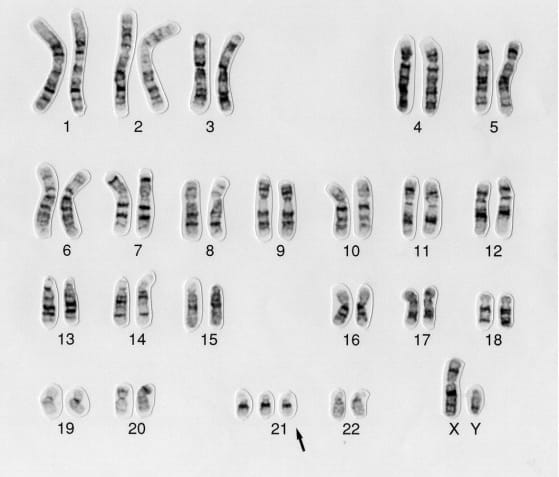What is Down’s syndrome?
Image credit: Wessex Reg. Genetics Centre / via Wellcome Images

Down syndrome is a genetic condition caused by the presence of all or part of an extra copy of chromosome 21.
- Down syndrome occurs in one in every 1,000 live births. The chance increases significantly 1 in 50 if the mother is over 45 years old.
- It’s caused by an additional copy of all or part of chromosome 21, so is sometimes called trisomy 21.
What is Down syndrome?
- People with Down syndrome have an additional copy of all or part of chromosome 21. This results in three partial or complete copies of the chromosome – also known as trisomy 21.
- In 95% of cases, the additional chromosome occurs by non-disjunction. This is when a pair of chromosomes don’t separate during cell division, causing daughter cells to have a different number of chromosomes in their cells.
- Alternatively, it can happen when one copy of chromosome 21 becomes attached to another and is inherited as a ‘passenger’ on that other chromosome. This is known as translocation.
- Because it is caused by a chromosome condition, developing embryos with Down syndrome account for around 2% of miscarriages or spontaneous abortions.

What is the biology of Down syndrome?
We don’t understand the exact mechanisms behind how extra genes on chromosome 21 causes Down syndrome. Research is ongoing.
What are the symptoms of Down syndrome?
- People with Down syndrome have varying degrees of cognitive disability, from very mild to severe, although most people have cognitive delays that are mild to moderate and may find sitting, standing, walking, talking and reading difficult. Some children may also experience symptoms of autism or attention deficit hyperactivity disorder (ADHD).
- Their growth may be limited, and they tend to have characteristic facial features, short-sightedness and deafness.
- Around 50% of children with Down syndrome have heart defects. Many children may also have digestive problems and an increased risk of infection. There is no effect on fertility.
- Thanks to advances in clinical treatment and corrective heart surgeries, the life expectancy of people with
- Down syndrome is constantly improving, and now exceeds 60 years old.
- Older people with Down syndrome are at increased risk of developing dementia and Alzheimer's disease than people without the condition.
How is Down syndrome diagnosed?
- Down syndrome is generally diagnosed at birth by the facial appearance of the baby, muscle weakness, sleepiness and the presence of extra folds of skin around the neck.
- Blood tests are carried out to confirm the presence of the extra copy of chromosome 21.
- In the UK, all pregnant people, regardless of their age, are offered screening tests for Down syndrome during the first 12 weeks of their pregnancy. This usually takes the form of:
- a blood test, looking for pregnancy-associated hormones and proteins that are affected if the baby has Down syndrome.
- an ultrasound scan: to measure the fluid collection under the skin at the back of the baby’s neck, which tends to be higher in babies with Down syndrome.
- Tests results do not give a definitive diagnosis but are combined with the maternal age to work out the individual likelihood of the baby having Down syndrome.
- Parents may also be offered cell-free foetal DNA analysis, which examines the baby’s DNA in the mother’s blood. Two other tests can give a definitive diagnosis but they are associated with a small risk of miscarriage:
- amniocentesis: a sample of amniotic fluid is taken through a needle inserted into the mother’s stomach and the DNA is analysed.
- chorionic villus sampling: a sample of the placenta is taken through a needle inserted through the stomach and into the womb, or a tube passed through the vagina and cervix into the womb. The sample’s DNA is analysed.
How are people with Down syndrome supported?
- Children with Down syndrome tend to reach developmental milestones later than children without the condition, so may need special educational support such as speech and physical therapy.
- Since Down syndrome can cause muscle weakness and other musculoskeletal challenges, physiotherapy can help adults with Down syndrome with their balance and posture.
- People with Down syndrome tend to have regular medical checks to monitor their heart, hearing, visual and skeletal conditions.
- Mouse models are currently being developed in the lab to allow scientists to advance their understanding of the specific genes involved and improve medical treatments for people with Down syndrome.